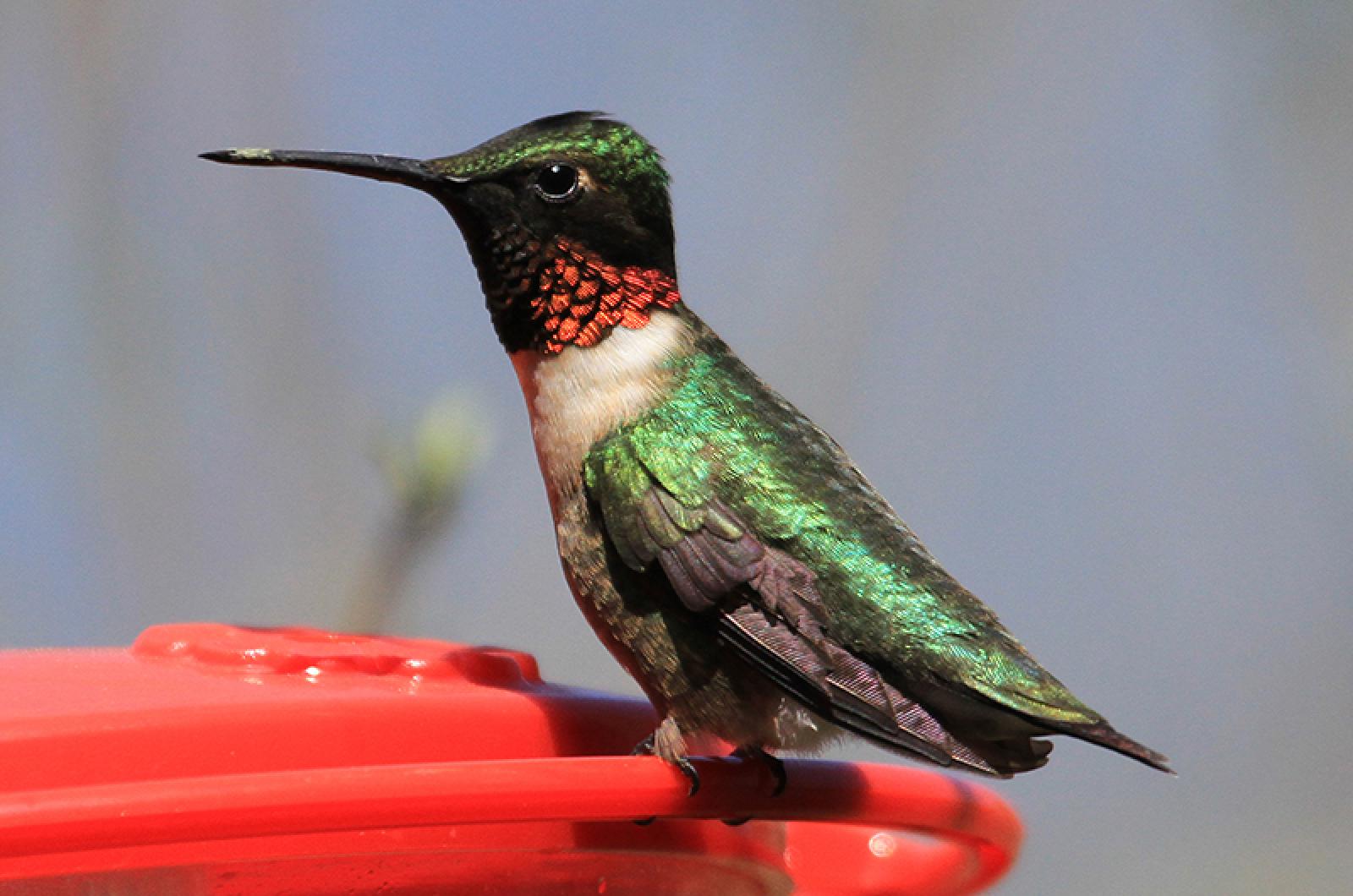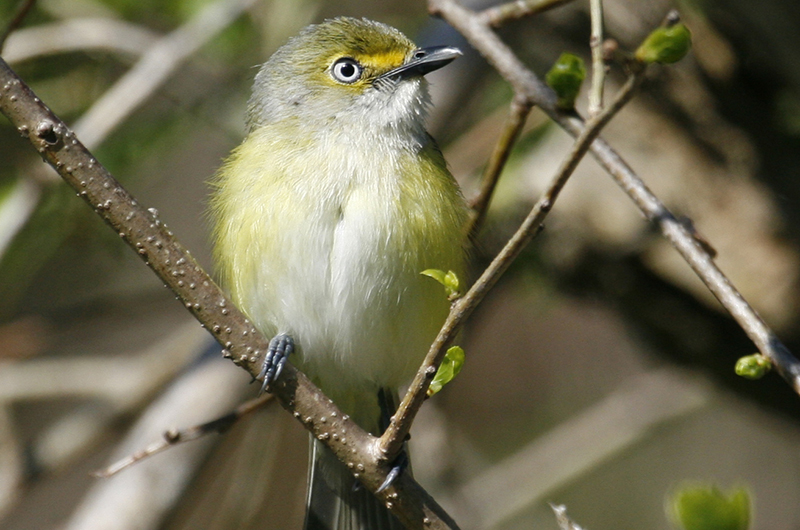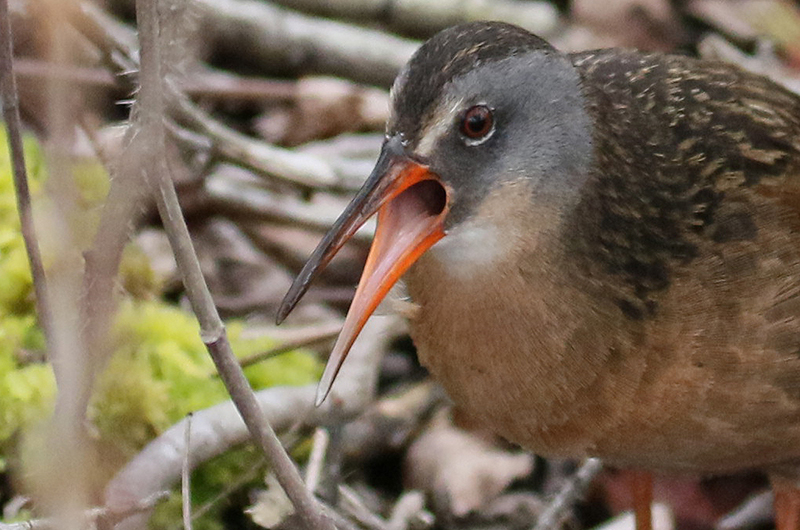It is already May and warblers are still few and far between. Past migration data suggests that more of them ought to be around by now. Likely, the superabundance of strong northerly, northeasterly and southeasterly winds we have experienced is responsible for this, as the smaller migrants — like warblers — may not attempt to fly into the teeth of these winds. The birds that nest here will do what it takes to get here, while migrants heading further north head up the Connecticut or Hudson River corridors, or bypass us by flying directly from Connecticut and Rhode Island to Boston and points north.
The most notable migrants have been birds that do not nest here. An out of place Wilson’s plover was spotted in the Squibnocket area by Kayla Smith on April 28. She noticed the heavier bill on what otherwise looked like a slightly larger semipalmated plover. The bird was spotted again on April 29 by Lanny McDowell and Allan Keith. Lanny McDowell spotted a yellow-crowned night-heron and a Virginia rail in Aquinnah on May 2 (the latter species likely breeds here in some marshy locales). And Phil Edmundson spotted a blue grosbeak near Watcha Pond on May 3, while Ira Certner spotted a short-billed dowitcher on tidal flats in Vineyard Haven on April 27. Allan Keith spotted two blue-headed vireos and three ruby-crowned kinglets at the Gay Head Moraine on May 3.
The first of the season warblers that have been reported recently are all species that breed here. A yellow warbler was spotted by Margaret Curtin on May 2, and Allan Keith spotted a few species the next day: yellow warblers at both Squibnocket and at his house, American redstarts at Waskosim’s Rock reservation and Great Rock Bight, both ovenbirds and northern parulas at Wasksoim’s, and a black and white warbler at Great Rock Bight.
Other species that showed up this week include a female rose-breasted grosbeak at Kevin Nydam’s feeder on April 28, and a white-eyed vireo seen on April 29 at Pilot Hill Farm by Penny Uhlendorf and Scott Stephens. It was spotted again on May 2. Both species likely breed here in small numbers in most years.
Bird Sightings On April 30, Karin Stanley heard the first whip-poor-will in the southwest corner of the State Forest, and Luanne Johnson spotted six least terns at Tashmoo opening on May 2. John Nelson observed the latter species at West Chop on May 3; he also saw two greater yellowlegs and a green heron at Farm Pond the same day. Catbirds are well-loved across the Island and their arrival is eagerly anticipated. First of the year sightings start with Sue Shea in her yard in late April. The Ivory’s (Kelsey, Kathy and Kenny) saw one in their yard on May 1, and Norma Holmes reports one on May 2. Multiple reports are from May 3: Scotty Goldin, Holly Mercier, Katherine Long, Catherine Deese, Martha Moore, Laurie Meyst, and me (at home and at both Blackwater Pond Preserve and Christiantown Woods). Ruby-throated hummingbirds have also been reported by numerous observers, including Heather Majkowski on April 28, Les Cutler April 29, Polly Basset and Elizabeth Barnes April 30, Allison Schmidt, Connie Alexander, Mike Tinus and Kathy Landers May 1, four people on May 2, and Lucy Cox, Penny Uhlendorf, Suzanne Pond and Betsy Harrington, and Les Cutler on May 3.
Baltimore orioles have been spotted by Tim Rush, Betsy Harrington, Mariah BenDavid, Cookie Gazaille, Joel Goldstein, Lindsay Allison, Catherine Deese and Laurie Meyst.
Great crested flycatchers continue to arrive, as on May 4 Penny Uhlendorf heard one at the Phillips Preserve, and Wendy Culbert and I heard one calling at Mink Meadows.
Two brown thrashers were spotted recently — Dardanella Slavin saw one in her yard on April 27, as did Tim Rush on April 29.
Birds with eastern in their names have also turned up this week. Eastern towhees have spotted by Scotty Goldin, Joel Goldstein, Marnely Murray and me at our feeders. They are now becoming common everywhere in the woods, and sightings will soon become even more frequent as they make a lot of noise scratching at the leaf litter to uncover their food. Their white outer tail feathers are also conspicuous as they fly away from us.
Peter Kramer spotted an eastern kingbird at Quansoo on April 30. Hans Goeckel found one at Katama on May 3, and he also reports that both chipping and white-throated sparrows have been eating his newly planted grass seed.
Michael Ditchfield found a male wood duck at Dark Woods on May 2.
The Edgartown barred owl has made another appearance. Stephanie Tilton reports hearing it near the Edgartown Stop & Shop. Their call is an easily recognized hooted “who-cooks-for-you, who-cooks-for-you-awwhll.”
Three lesser black-backed gulls were spotted in Katama by Lanny McDowell on May 1.
Both Olsen Houghton and John Best report that the woodcock are still conducting their courtship flights at dusk at the Frisbee golf course in the state forest. They can be heard from the parking lot there.
Norma Holmes spotted three species of swallows — barn, northern rough-winged and tree — all skimming around over the dunes and marshes of East Beach on May 1. She also saw willets, oystercatchers, black-bellied plovers and sanderlings.
Last week’s column noted that goslings have appeared. This week it is a family of young killdeer. A family of four chicks was spotted at a Katama Farm on May 2 by Jeff Bernier. All four fuzz-ball hatchlings are running around feeding themselves under their parents’ ever watching eyes and loud vocalizations should anything come too close.
And lastly, Allan Keith was excited to watch a hairy woodpecker busily excavating a nesting hole in a tree trunk. He will keep watching as he has not seen very many nests of this species.
Watching birds helps relieve the isolation of social distancing! Stay healthy and report your sightings to birds@mvgazette.com.
Robert Culbert is an ecological consultant with Nature Watch LLC living in Vineyard Haven.










Comments
Comment policy »